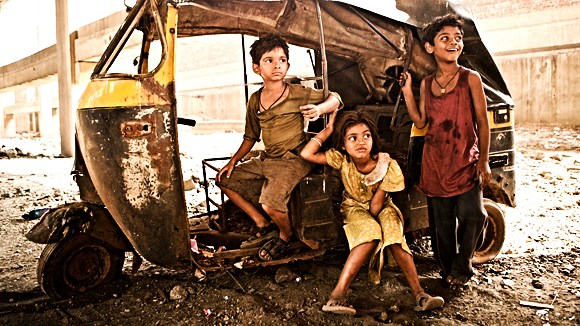Slumdog Millionaire deals with all aspects of Indian social life, including the extreme wealth and poverty of Mumbai, the horror and misery of the urban slums, the contradictory killings of religious beliefs, and the naked class discrimination, but it also has a hopeful perseverance to move forward.

Slumdog Millionaire is a classic Indian film that uses a quiz show as an introduction to a heart-stopping narrative, with sophisticated camera language and accurate, vivid characterizations.
The film tells the story of a poor young man who grows up in a slum and participates in a quiz on the TV show “Who Wants to Be a Millionaire” in search of his long-lost beloved. At the police station, he recounts his harrowing and painful childhood, and it is life that gives him the answer to the absurdity that is the answer behind the mystery.
The director organizes the story through Jemima’s recollection of his encounter and shows the audience open threads of development. From the point of view of the time and space of the story presented in the whole film, the story of participating in the program and becoming a millionaire is only a part of Jemima’s life, the film is narrated from the middle of the story, all the memories and fragments of life have become a key expansion to increase the narrative point of the film, it is these events that complete the richness of the film’s narrative and together constitute the coherence of the film, a A continuous narrative line from childhood to youth.

Slumdog Millionaire is a rare masterpiece, both in terms of its plot and characters, and in terms of their cinematic technique and ideas. The film uses Jemima, a young Indian from the slums, as the beginning of events and his memories of finding his common class girlfriend, Latika, and his participation in the TV variety show “Slumdog Millionaire” as a stimulus for discussion. The director’s skillful use of intercutting and flashback filming techniques makes reality and memory fully connected and brings together the various elements that capture the viewer’s attention to enhance watchability. In terms of cinematic technique, “Slumdog Millionaire” has a smooth script, a superb narrative, and a variety of filming techniques that are small and sophisticated.
It is worth mentioning that most of the shots in this movie are not shot in a traditional way, and this is what makes this movie special. Many of the images in the film are slightly shaky, and even when shooting some of the taller buildings, it still maintains unconventional camera angles. At first glance, the film could easily be perceived as a low-budget, low-investment production, but this is a deliberately unconventional combination created by the director. The irregularity of the images combined with the extensive handheld photography shows the feelings of panic and insecurity of young Jemima in the chaotic environment. Thus, in terms of detail, this film is slightly better than other similar films.

It can be said that Slumdog Millionaire deals with all aspects of Indian social life, including the extreme affluence and poverty of Mumbai, the horrific misery of the urban slums, the conflicting killings of religious beliefs, and the naked class discrimination, but also possesses a hopeful perseverance to move forward. The film has no emotional speeches from the protagonist, no narration to interfere with your understanding of the issues, and no superfluous subtitles. All the ideas and themes that the director wants to tell you are skillfully integrated throughout the film. It can be said that this is a tragic and inspirational film, a personal epic belonging to all the civilians at the bottom of the world, and the thoughts and shocks it brings to the audience can be fully classified as a classic film work.
